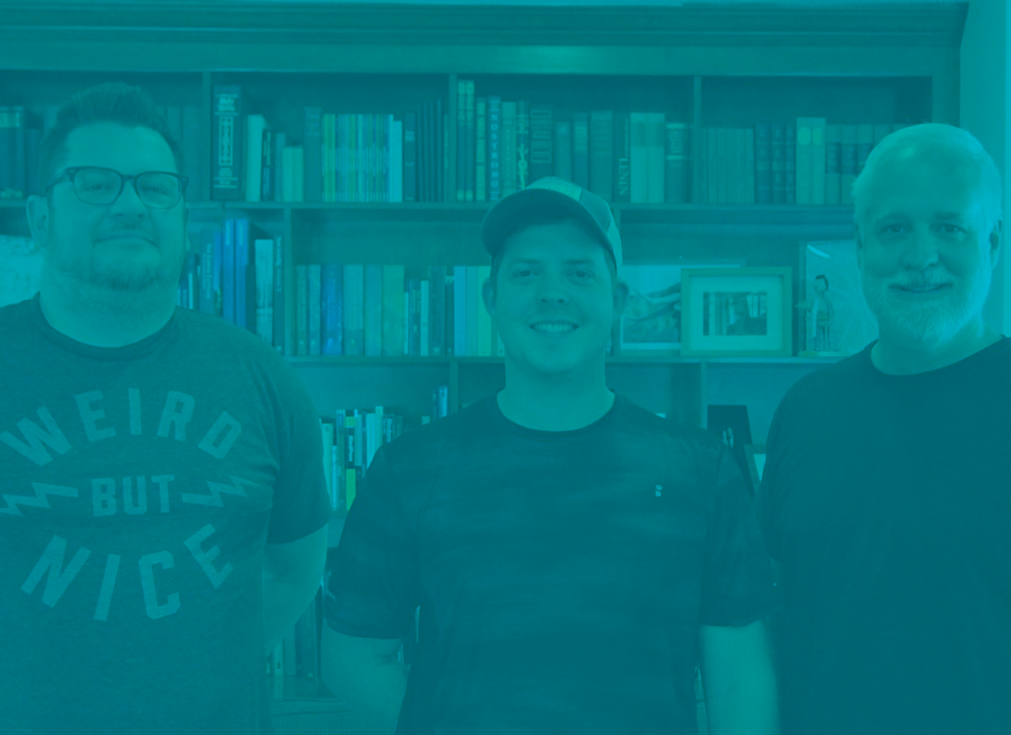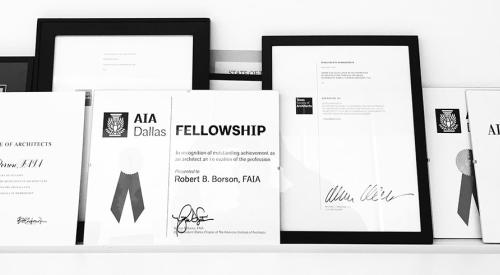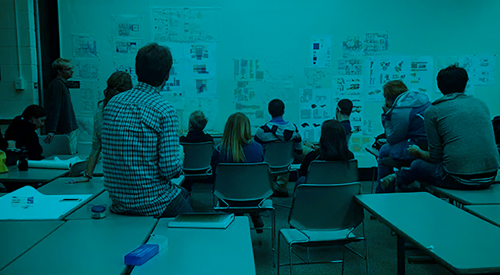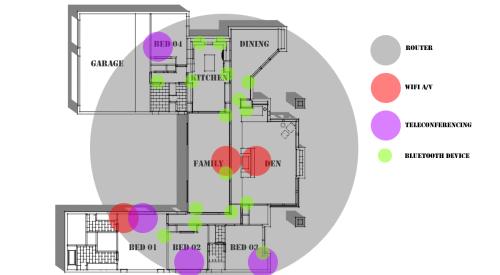Since Andrew and I completed our architectural registration exams in a previous decade than the one we are currently in, we brought in someone a bit younger to assist us with today’s topic, someone who has just recently gone through the process of taking the ARE. He did so well that, he, along with the help of his friend and roommate at the time, Adam Denais, have worked with the Dallas Chapter AIA to implement and improve upon existing ARE “Success Teams.” Welcome back to the show, my former podcast co-conspirator, Landon Williams.
 Left to right: Andrew Hawkins, Landon Williams, and Bob Borson in our post-episode recording glow!
Left to right: Andrew Hawkins, Landon Williams, and Bob Borson in our post-episode recording glow!
So we are here to talk about the ARE, which is really the reason I wanted to have Landon on the show. Landon is a pretty young guy and when it came to taking his exams, he got to it!
To start things off right… Here is a link to the National Council of Architectural Registration Boards. NCARB. This is definitely the place to start if you want to know about the process, the qualifications and the test to become a registered, licensed Architect. We are going to talk quite a bit about the current state of things associated with the architectural registration exam but we can’t even begin to come close to the content you will find on the NCARB site.
It also makes lots of sense to try and find others in your area that are studying for the test as well. You know the saying… “misery loves company”. But honestly, the camaraderie that you can develop while going through this process with your peers can make some life long relationships. And also it is helpful to have some other perspectives when you are studying for this type of long and arduous set of exams. If you can, find others that are taking the same exam as you so you can compare notes and talk shop as you head towards the exam. The program that Landon is working within the AIA Dallas chapter is more than likely available in some form in most locations in the country. Or at least close by. But also these days it is possible to find an online community to join if you are not near a physical group.
As of this writing, the test is currently ARE 5.0 and to help set this moment in time, I went to the National Council of Architectural Registration Boards (hereto after called NCARB) so that I could prepare for today’s conversation. There are currently 6 sections of the exam:
Practice Management – 2018 pass rate = 51% 2hr 45 min
Project Management – 2018 pass rate = 62% 3hr 15 min
Programming and Analysis – 2018 pass rate = 53% 3hr 15 min
Project Planning and Design – 2018 pass rate = 46% 4hr 15 min
Project Development & Documentation – 2018 pass rate = 53% 4hr 15 min
Construction & Evaluation – 2018 pass rate = 70% 3hr 15 min
If you added up all the test times – actual test times, not the appointment time, the test is currently sitting at 21 hours in length. Since it has been a long time since I took and passed these tests, I am going to avoid any specific comparisons. The takeaway from the information above is fairly obvious – the test is long and hard and the majority of people who take these exams will fail them.
Bummer.
But you don’t have to be part of these statistics!! My experience, along with the seemingly hundreds of hours I have spent talking with people about the ARE, is that these passing rates seem to reflect an individual’s willingness to prepare, not their ability to perform. So if you are reading this post, you are already ahead of the game.
ARE (Architectural Registration Exam) Success Teams
is an accelerated study program designed to support ARE candidates through a structured and focused approach, providing the materials, mentorship, and camaraderie needed to pass the ARE. The program is comprised of recurring study sessions, where all participants gather and trade study materials, study tips, exam experiences, and compete in friendly ARE Trivia games.
Objectives
The new Success Teams program organizes the six sections of ARE 5.0 exams into a “block system,” combining exams with intertwined contents into “blocks.” The goal is for participants to complete all the blocks within one calendar year, following a predetermined, yet flexible, timeline.
By strategically incorporating other existing YP ARE Prep efforts such as ARE Trivia Night, ARE Lecture Series, and the new provision of hands-on specialized mentorship, the new ARE Success Team program reinforces ARE knowledge in multiple ways within each block.
Components
There are three key components in the revamped program of which will be catered to each block to fit the specific need of each test:
• Provided study materials
• Study guides, review manuals, practice problems, and access to mock practice exams will be provided to participants at the start of each block, and be traded at the end of that block for the next set.
• Knowledgeable mentors
• Each block will be guided by a designated mentor(s) who is/are expert(s) in the contents of that block, and have passed the ARE.
• Related lectures/events
• Lectures and other programs or events will be strategically scheduled throughout the blocks to correlate with the content of the ongoing block throughout the scheduled year.

Per Landon:
This is an outline based on the mentoring concept that Adam and I created, along with AIAD’s supplementary events like the Trivia Night and Lecture Series. They (AIAD) do provide PPI (Ballast) study materials to participants for each exam, but I’d say 85% percent of the content for all exams can be sourced from a handful of textbooks, most of which will have probably been acquired during one’s time in school. Hopefully, these gold mines weren’t tossed to curb, but at least currently being used to prop up computer monitors or acting as doorstops. NCARB does an excellent job of providing direct source guidance in the back of their comprehensive ARE Handbook as well.
The above graphics demonstrate our idealized year-long route to tackling the exams as a whole. The first three exams could be described as your “professional practice exams”, while the final three are referred to as the “design exams”. NCARB presents the exams in a more project-based chronological order, but we feel this method provides the most overlap of information and content correlation. The difference in the two graphics is simply whether or not you feel it best to approach the two larger exams (in terms of content), PPD and PDD, as separate endeavors or as a cohesive block of content. PPD will be more broad-concept based while PDD narrows into the nitty-gritty detailing of systems and structure, but they both center around the same general overall content.

The image above is a sample outline from the week-by-week that was created to help guide people’s studying schedule for the PPD and PDD exams from a handful of key books and study material.
 The moment Landon Williams found out he passed the ARE.
The moment Landon Williams found out he passed the ARE.
Tips for Success [32:46 mark]
Even though it’s been quite a while since I took the exam, there are a handful of things that I think stand the test of time when it comes to preparing for this exam. Landon has done a nice job above of explaining the approach and purpose to the ARE Success Teams program that Dallas has implemented, but I feel that it was still important to cover some basic tips for test-taking success. These 5 things I feel that were instrumental in allowing me to take, and pass, every single test the first time through. I wouldn’t describe myself as a terrific test taker and so some of these tips might not be applicable to you – although they certainly wouldn’t hurt.
Set a Schedule and Stick to It
I gave myself 4 weeks to prepare for each section of the exam and this was always enough time to cover all the material I had to study and review.
Landon and his study buddy decided in the beginning about their path to exams and gave themselves ample time that met their needs. They stuck to this schedule and finished in the time frame they had planned.
Andrew’s story was less structured but still held himself to a schedule so he could reach his goal with the quickness necessary.
Schedule Your Test for first thing in the Morning
Every test I took was at either 8 or 9 am in the morning. I am a big believer in that most people psyche themselves out before the test and the more time you leave yourself to think about what you are doing, the more anxious and nervous you will become. I also think that reviewing the study material right before you go in for the test is a bad move. You’ve been studying for 4 weeks by this point and asking yourself questions that you might not get correct will only undermine your confidence.
Andrew says: I may have a differing opinion here as I am not, repeat not, a morning person. Also, I did not have the options to take a test first thing in the morning due to having to make a one plus hour drive to get to the testing center. Now I doubt that is much of an issue now as technology has become more widespread, but I still doubt I would schedule my tests first thing. The key here is to make sure you plan in the way that makes you the most conformable and relaxed so you walk into your test feeling the best you can. This means something different for everyone.
Get a Good Night’s Rest
These tests are long and you need to be fresh coming into the test that morning. Part of the reason I gave myself 4 weeks for each test was so I could be methodical about it and not feel like I was coming in unprepared. I was well-rested and walked into each test center confident that I had taken my preparation seriously and was ready to take my test.
Andrew says: I agree 100%. This is one of the most important items on this list. No matter when you are scheduled to take the test, being well-rested is essential!
Create a Study Pattern
I set a schedule for when I would study and when I would have breaks. Every Monday through Thursday I studied for two hours – from 7 to 9 pm. I was married but I didn’t have children yet and this time allowed me to get my study time in but also allowed me to eat dinner with my wife, watch TV, run errands – whatever I needed. I took Friday nights off so that I could go out with friends, have people over, just go out and do something fun. I had to get 8 hours of studying in over the weekend, but I was free to pick when I was going to get it in. My only rule was that a study session had to be at least 2 hours in length to count – 30 minutes here and there doesn’t count; you can’t get in the right frame of mind.
Study Materials make a Difference
I didn’t start taking the exam until I was 30 years old – and I felt like a complete loser for not being licensed. Graduating from college with my degree in architecture was not the finish line for me. Until you get your license, you are not an architect and as a result, taking the ARE is a really big deal. I had spent most of my career designing interior retail spaces and felt that I simply hadn’t learned enough practical matters to actually sit for the exam. While the first part of that sentence is true, the part about not knowing enough to take the exam is total garbage. There is no reason to not start taking the exam immediately – if you are waiting on getting some practical experience – don’t.
There is enough study materials available for the ARE for you to learn everything you need in order to pass the exams. I used the David Kent Ballast ARE Review Manuals for almost all of my studying except for the structural exams. I also made my own flashcards – thousands of them – for every section. I struggle a bit with short-term memorization and making my own flashcards really helped me.
But these days there are so many options to choose when it comes to study materials. While we do not go into specifics, programs like the one Landon helps guide offer suggestions and provide some feedback on the more useful study materials that are now available. As now there are probably 40 different study service providers, materials and/or guides, it is critical to sift through the weeds so to speak. Often that is information that may be come from someone who has recently taken and passed the exams. While every person has a different study mentality, study materials play an important role in success. Online, in print, on YouTube, or any other method of delivery make sure you choose study materials that work for you, but it is often better to use ones that have already been vetted by other test-takers.
Some of the books that we mentioned in the episode are listed below. Many of these may already be in your library due to your classes form architecture school.

Building Construction Illustrated by Francis D Ching

Architect’s Handbook of Professional Practice (by AIA)

Architects Handbook of Professional Practice (The Student Edition) by (AIA)

Building Codes Illustrated by Francis Ching

The Architect’s Studio Companion: Rules of Thumb for Preliminary Design by Edward Allen
There are a lot of other resources and programs out there that have grown in their popularity over the last 2+ years, and if you are reading this post, you can probably guess which ones they are (probably even think it’s notable for their absence in this post). I’ll keep it simple for you – unless I have first-hand experience of a program or source of information, I am not going to put it out here for you with any sort of recommendation. They could be good, they could be something other than good, but I don’t personally know so I am not going to chime in with an opinion. I know a handful of the people behind these programs and what I will say is that they all seem motivated for your success.

Since Landon is familiar with the concept of the hypothetical question, mostly because he has answered them before and took part in one of my all-time favorite hypothetical questions where we were stuck in a zoo and all the animals were out of their cage, I think we can launch right into it.
"You can either live in a small town and be rich, or a big city and be poor. There is no traveling outside of the boundaries of that city for the rest of your life. Which one do you choose?"
Two of us have the correct answer here. One of us does not. And for once, Andrew actually falls into the “correct” side of the decision. But this one may seem straight forward on the surface but we manage to discuss a few variations to the theme that put a different perspective on the overall question. Landon hopes to find all the free stuff the big city has to offer. Bob and Andrew are not sure those freebies exist in the abundance that Landon expects. Andrew will have a secret theater room. Bob will keep his circle small. While we can just say there are winners and losers, there are certainly positive effects due to choosing the “best” answer here.
Taking the architectural registration exam is a crucial step in the process of becoming an architect. The test is long, difficult, and stressful, but it is an absolute necessity if you want to be an architect. Graduating from school is not our finish line, becoming licensed is. IF you find yourself in a position where you need to take the registration exam and you are nervous … don’t be. You can do it, all it takes is the same sort of effort you’ve already demonstrated you are capable of, evidenced by the fact you went to and graduated from, architecture school.
Cheers,

We would like to thank Sherwin Williams Coil Coatings for their support of today’s episode. For more than 50 years, Fluropon coatings have been protecting monumental structures around the world. To learn more about the products and services offered by Sherwin Williams as well as requesting your own architectural metal color card, please visit www.coil.sherwin.com/architectslife.













